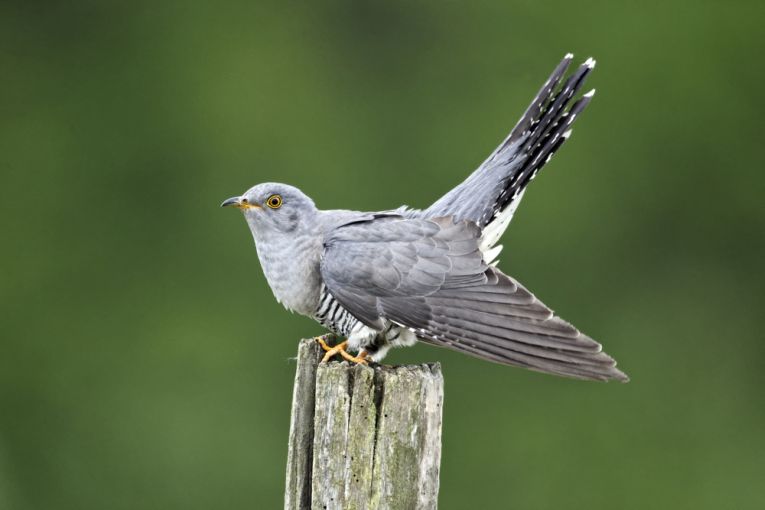Remember the common cuckoo, Cuculus canorus? They are much rarer now, but their achievement as a parasite has been noted for thousands of years. Finally we do have evidence of why they have their very obvious barred patterning. Far from hiding it from the small birds it parasitizes, the hawk-like pattern scares them. This gives the female time to sneek onto their nest and lay its single egg. The large cuckoo nestling then proceeds to murder any other residents of the nest and push any eggs out.
Thanh-Lan Gluckman and Nicholas I. Mundy from Cambridge wrote Cuckoos in raptors' clothing: barred plumage illuminates a fundamental principle of Batesian mimicry in the journal, Animal Behaviour.
They point out that cuckoos mimic their local raptors, finding that while there was little resemblance between hawks rom other regions and the cuckoos, their own raptors such as English sparrow-hawks, bore a very close, barred pattern to that of the cuckoo species . In other countries, bazas and harrier-hawks' patterns bear the closest resemblance to that of the cuckoo. What was surprising was that the pattern was nothing like the colours seen in areas where the species was absent. It closely matched only the local predators. The sub-Saharan African cuckoo-hawk, Aviceda cuculoides, for example is a true raptor that closely resembles the cuckoo species when the cuckoo migrates there in the winter
Digital image analysis converted images to fit the spectral sensitivity of bird sight. The cuckoo is very deceptive in its natural behaviour but this makes the species even more devious in making small species believe that a real predator is about to attack them, not to lay an egg in their nest. Thanh-Lan Gluckman explained too, how, "the barring on their plumage helps cuckoos conceal themselves while searching for potential nests, then when they approach, the host of the nest may mistake a cuckoo for a raptor coming to get them - giving them unfettered access to lay eggs." Hence the new mimicry device proposed to add to the subterfuge that the species employs to make its style of parasitism work.










